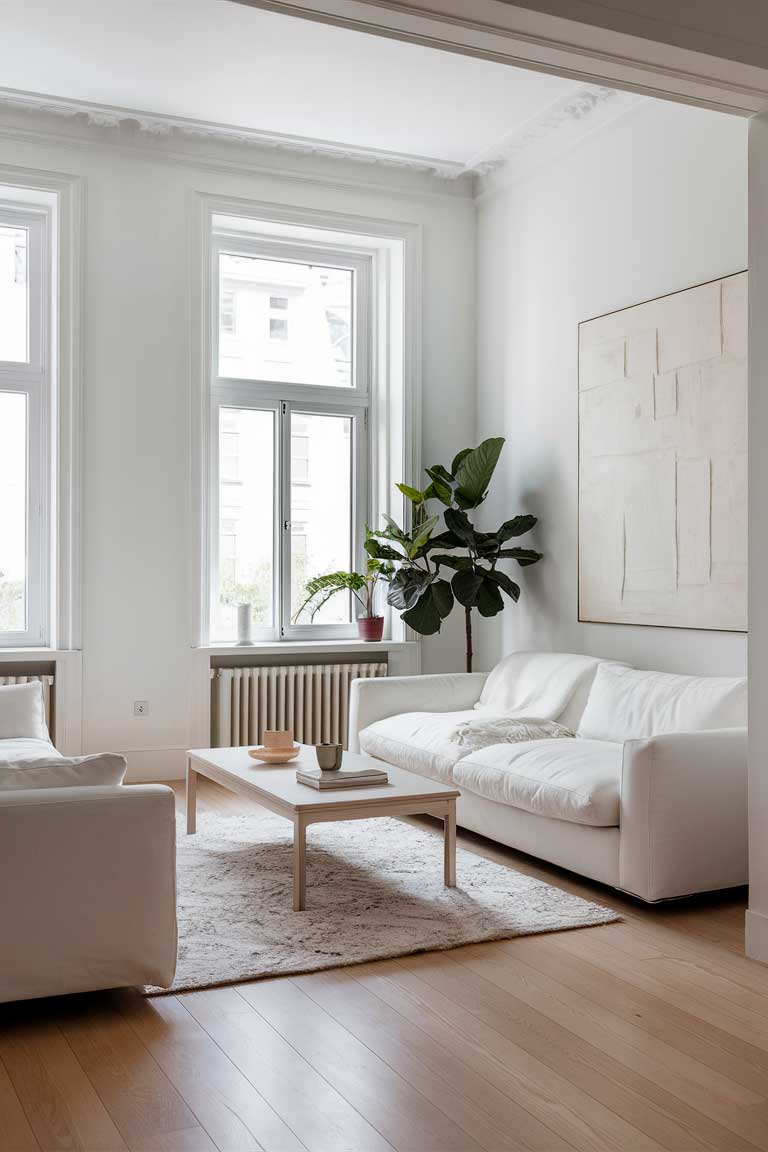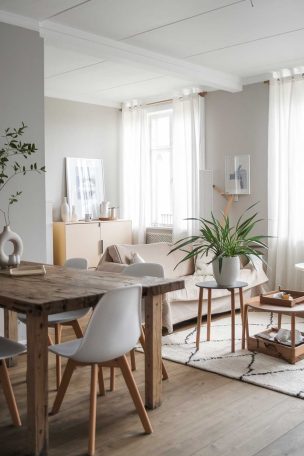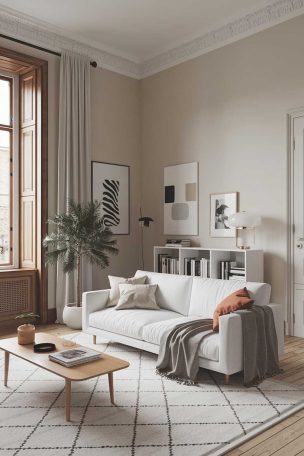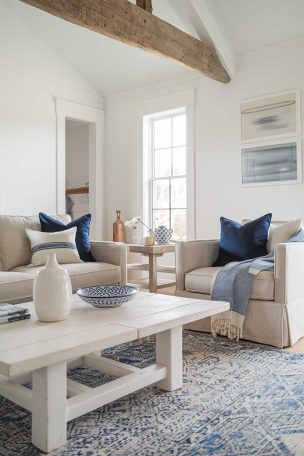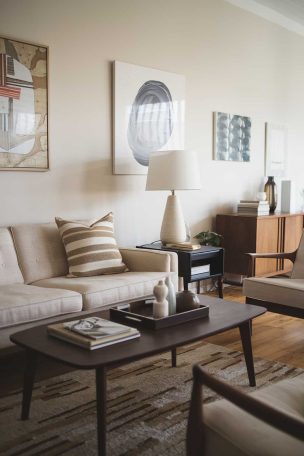Scandinavian minimalism has taken the design world by storm, and for good reason.
It’s a style that perfectly balances aesthetics and functionality, creating spaces that are both beautiful and livable.
Let’s explore the world of Scandinavian minimalist living rooms and how you can transform your space into a haven of serene simplicity.
The key to Scandinavian minimalism is creating a space that feels open, uncluttered, and bathed in light.
It’s about stripping away the unnecessary and focusing on what truly matters in a living space: comfort, functionality, and a connection to nature.
Key Elements of Scandinavian Minimalism
Before we discuss the specifics, let’s examine the core principles that define this style.
These four elements – light, nature, functionality, and simplicity – are the cornerstones of Scandinavian design.
They work together to create spaces that are not just visually appealing but also practical and uplifting to live in.
As we explore each aspect of Scandinavian minimalist living rooms, you’ll see how these elements come into play again and again.
Color Palette
The color palette is a crucial aspect of Scandinavian minimalism.
It’s all about creating a bright, airy feel that maximizes the impact of natural light.
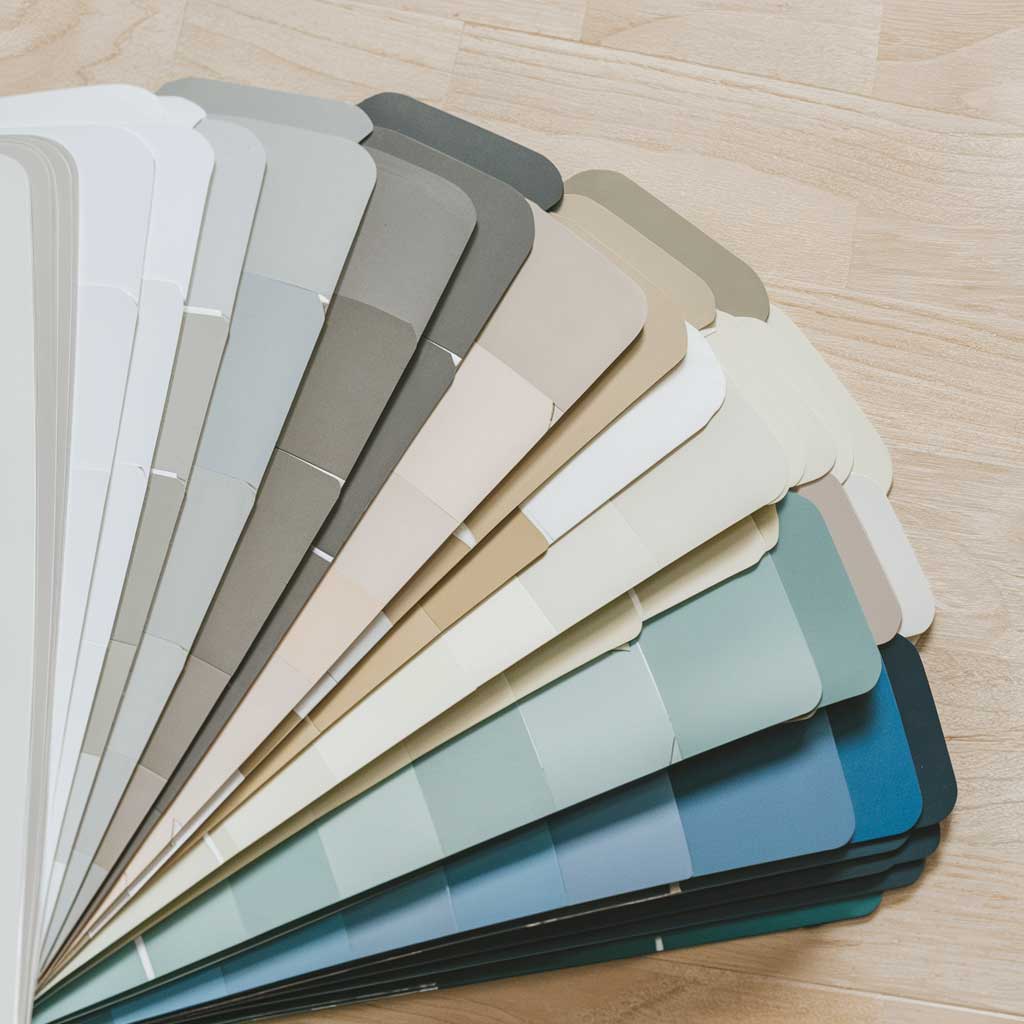
Neutral Base
The foundation of any Scandinavian minimalist living room is a neutral base.
This typically means white walls and ceilings, which help to reflect light and create a sense of spaciousness.
- White walls and ceilings
- Matte finish for a softer look
- Eggshell finish for easier cleaning
- Light wood flooring
- Oak, ash, or pine options
- Wide planks for a spacious feel
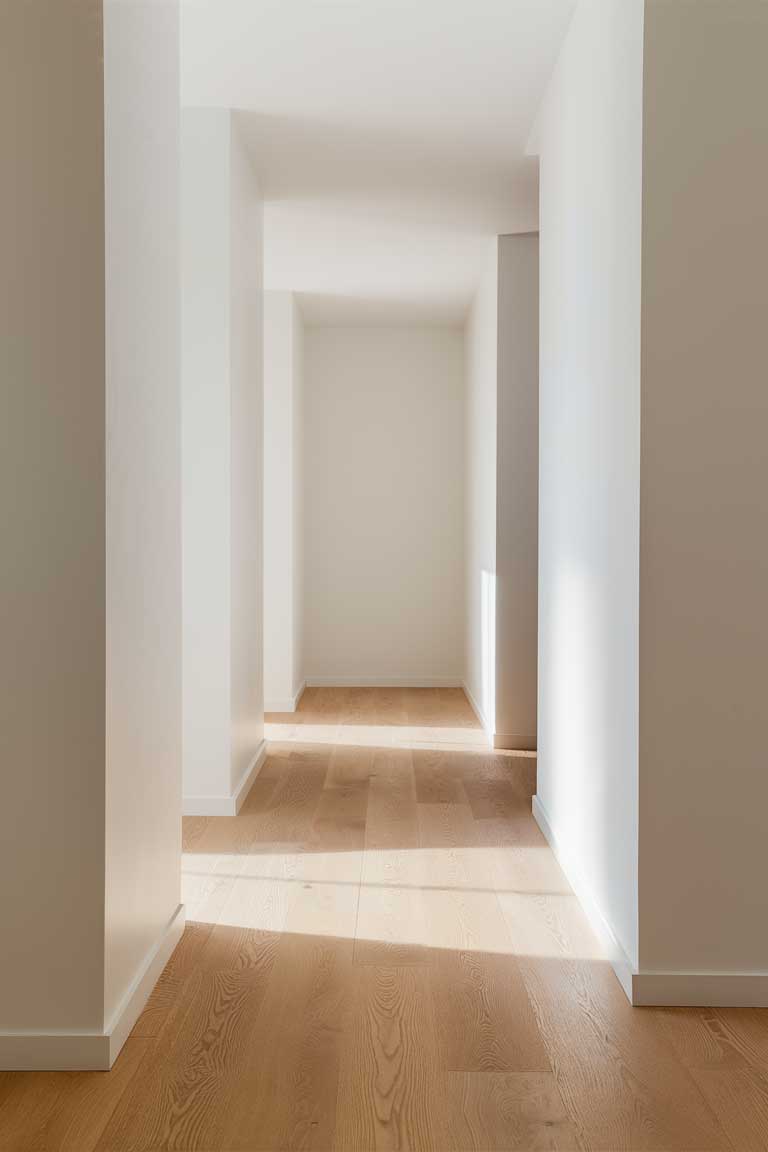
When it comes to the walls, you have some flexibility in terms of finish.
A matte finish can create a softer, more relaxed atmosphere, while an eggshell finish might be more practical if you’re worried about marks or stains.
For flooring, light wood is the go-to choice.
Oak, ash, and pine are all popular options, each bringing its own unique character to the space.
Wide planks can help make a room feel larger and more open, perfect for the minimalist aesthetic.
Accent Colors
While the base is neutral, Scandinavian minimalism isn’t afraid of color.
The key is to use it sparingly and thoughtfully.
- Soft grays and blues
- Warm beiges and tans
- Black as a grounding element
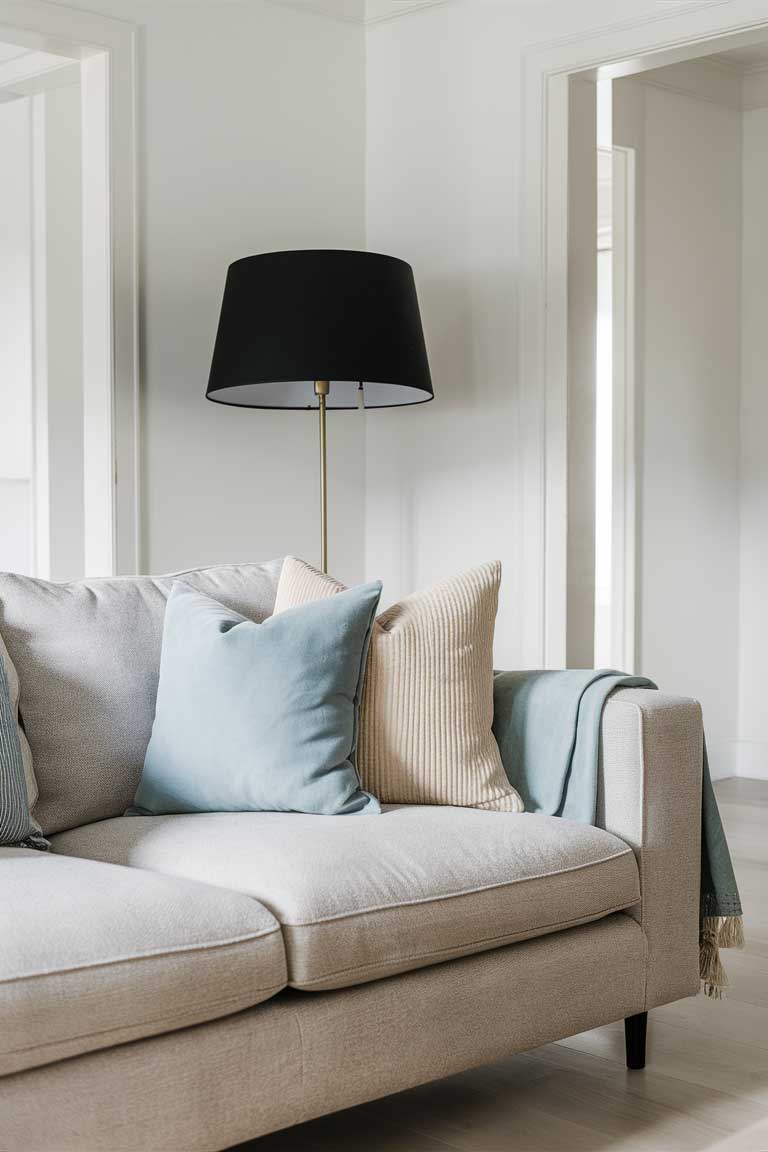
These accent colors can be introduced through textiles, artwork, or small decorative objects.
The soft grays and blues add a cool, calming touch, while warm beiges and tans bring a cozy feel.
Black elements, used sparingly, can provide a striking contrast and help ground the space.
Furniture Selection
Furniture in a Scandinavian minimalist living room should be functional, comfortable, and visually light.
The goal is to create a space that feels open and uncluttered.
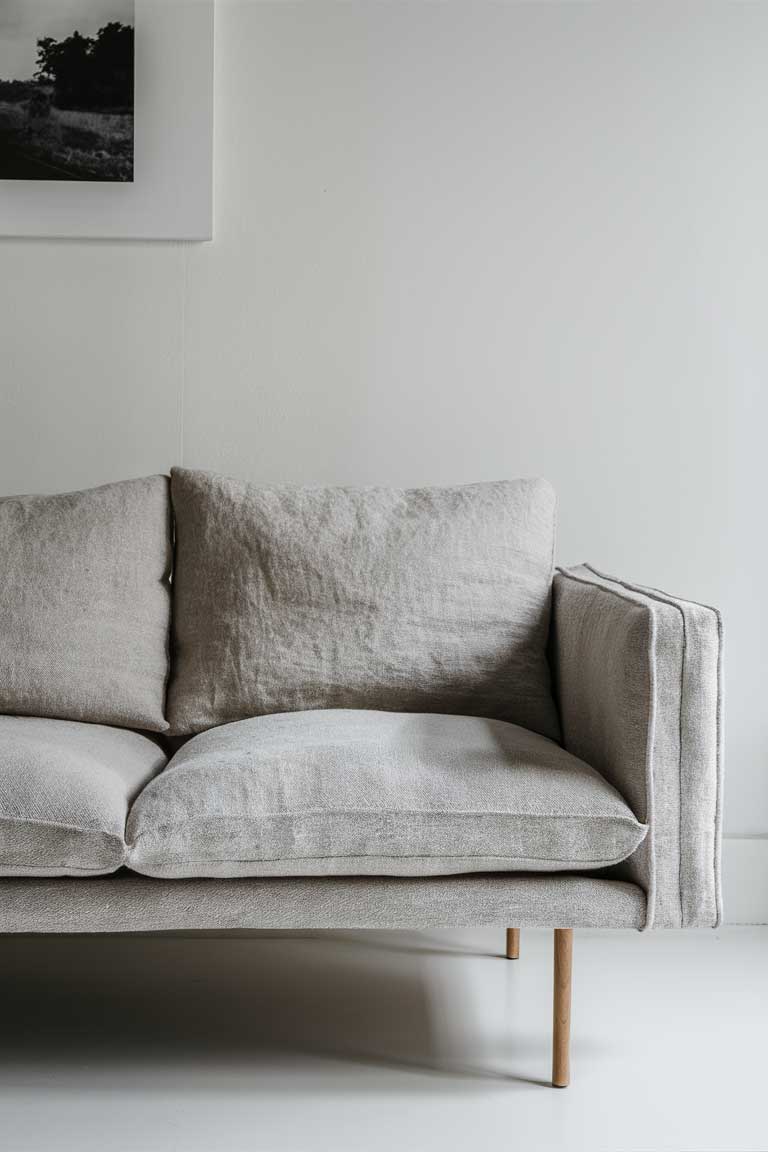
Seating
When it comes to seating, look for pieces that combine comfort with sleek design.
- Low-profile sofas
- Light-colored fabrics (linen, cotton)
- Tufted designs for added texture
- Armchairs with wooden frames
- Curved lines for organic appeal
- Sheepskin throws for warmth

Low-profile sofas help maintain an open feel in the room.
To keep with the airy aesthetic, opt for light-colored fabrics like linen or cotton. Tufted designs can add a touch of texture and interest without being overly ornate.
Armchairs with wooden frames are a staple of Scandinavian design.
Look for curved pieces to add a soft, organic element to the space.
A sheepskin throw draped over the chair adds warmth and texture and nods to Scandinavian heritage.
Tables and Storage
In true minimalist fashion, tables and storage pieces should be functional and unobtrusive.
- Coffee tables with slim profiles
- Round shapes to soften the space
- Materials: light wood, marble, or glass
- Wall-mounted shelving units
- Floating shelves for a weightless look
- Modular systems for flexibility
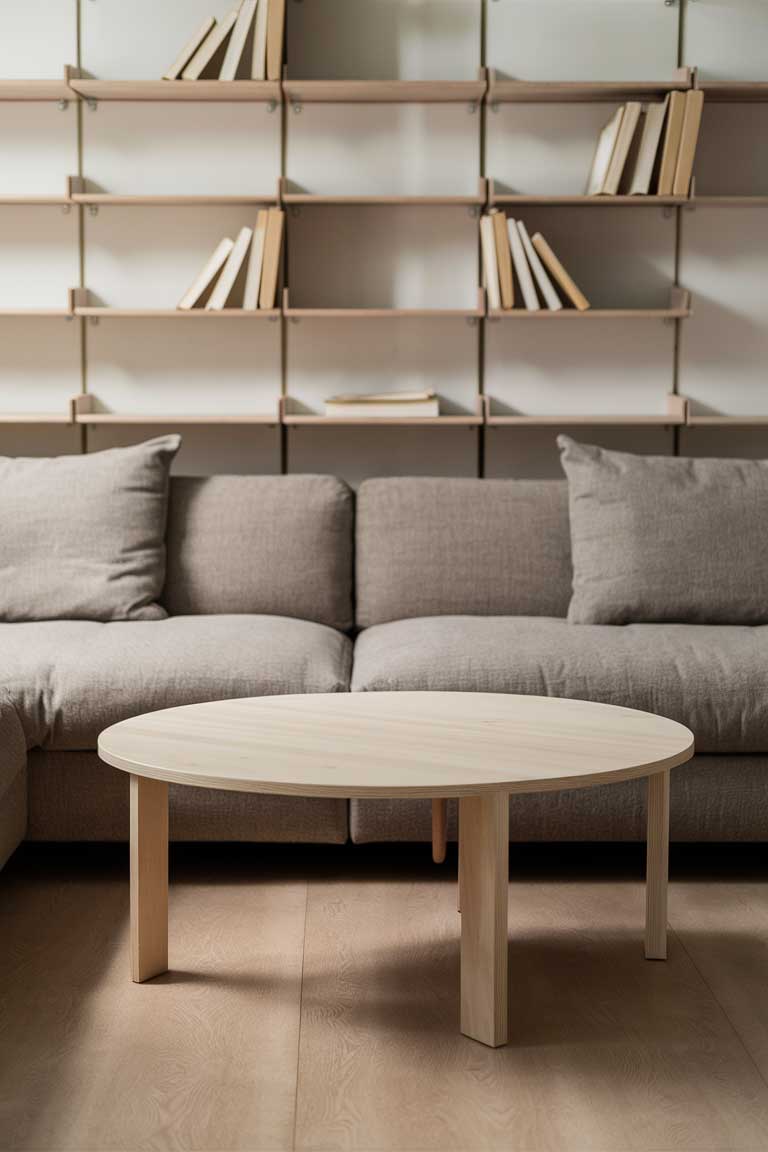
Coffee tables in Scandinavian minimalist design often feature slim profiles to maintain an open feel.
Round shapes can help soften the space, contrasting nicely with the straight lines often found in minimalist furniture.
Light wood, marble, or glass are all excellent material choices, each bringing its own unique character to the room.
For storage, wall-mounted units are a great option. They keep the floor clear, adding to the sense of space.
Floating shelves create a weightless look that’s perfect for minimalist interiors.
If you need more substantial storage, consider a modular system that can be customized to your needs while maintaining a clean, streamlined appearance.
Lighting Design
Lighting is crucial in Scandinavian design, given the long, dark winters in Nordic countries.
The goal is to maximize natural light and supplement it with well-designed artificial lighting.
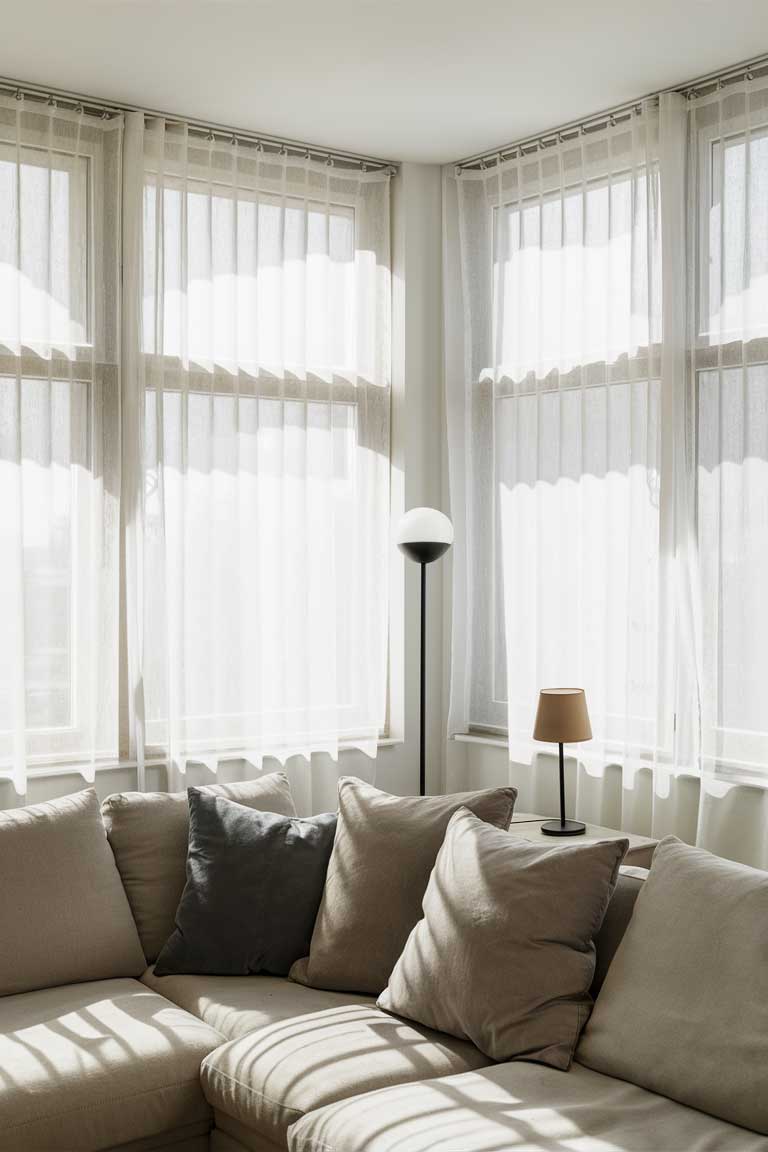
Natural Light
Maximizing natural light is a key principle of Scandinavian design.
- Large windows with minimal treatments
- Sheer curtains for privacy without blocking light
In a Scandinavian minimalist living room, windows should be as large as possible, and treatments should be minimal.
If privacy is a concern, opt for sheer curtains that allow light to filter through while still providing some coverage.
Artificial Lighting
When natural light isn’t enough, artificial lighting steps in to create a warm, inviting atmosphere.
- Pendant lights with simple geometric shapes
- Floor lamps with adjustable arms
- Table lamps with ceramic or glass bases
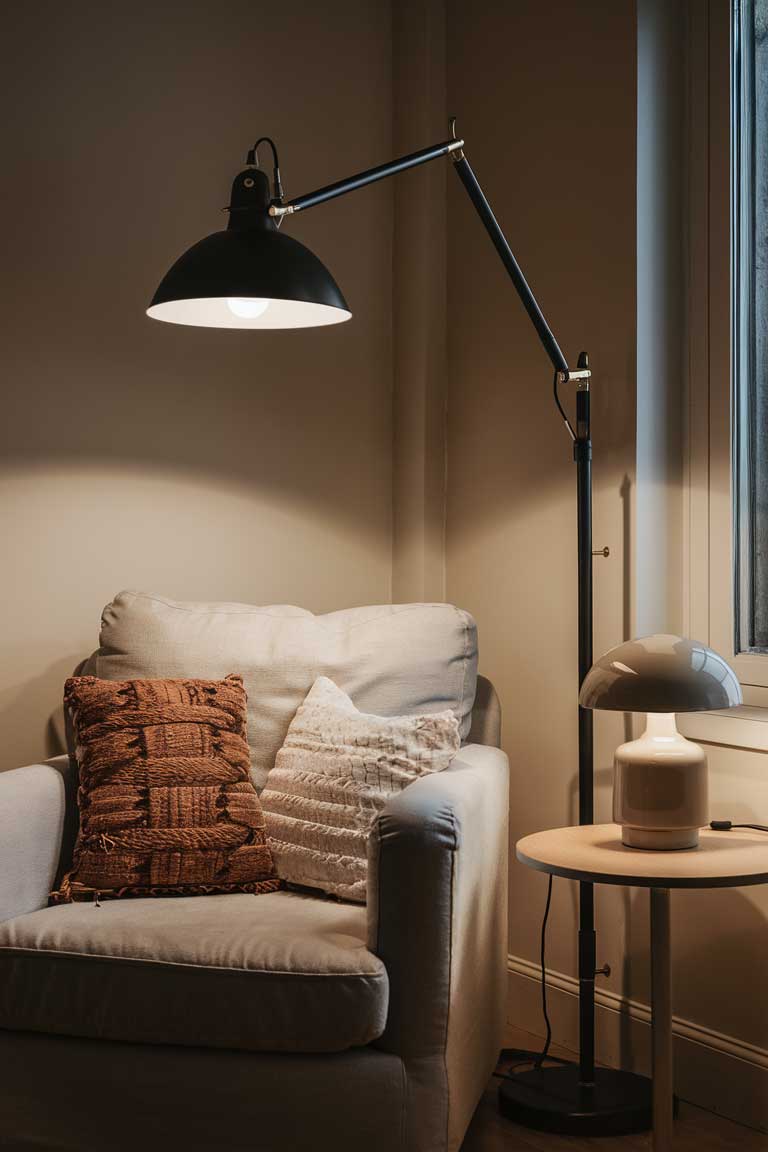
Pendant lights can serve as both functional lighting and a design statement.
Look for simple geometric shapes that complement the minimalist aesthetic.
Floor lamps with adjustable arms are perfect for creating targeted lighting for reading or working.
Table lamps with ceramic or glass bases can add a touch of texture and interest while providing soft, ambient light.
Textiles and Textures
While Scandinavian minimalism emphasizes clean lines and uncluttered spaces, it’s far from sterile.
Textiles and textures are crucial in adding warmth and interest to the room.
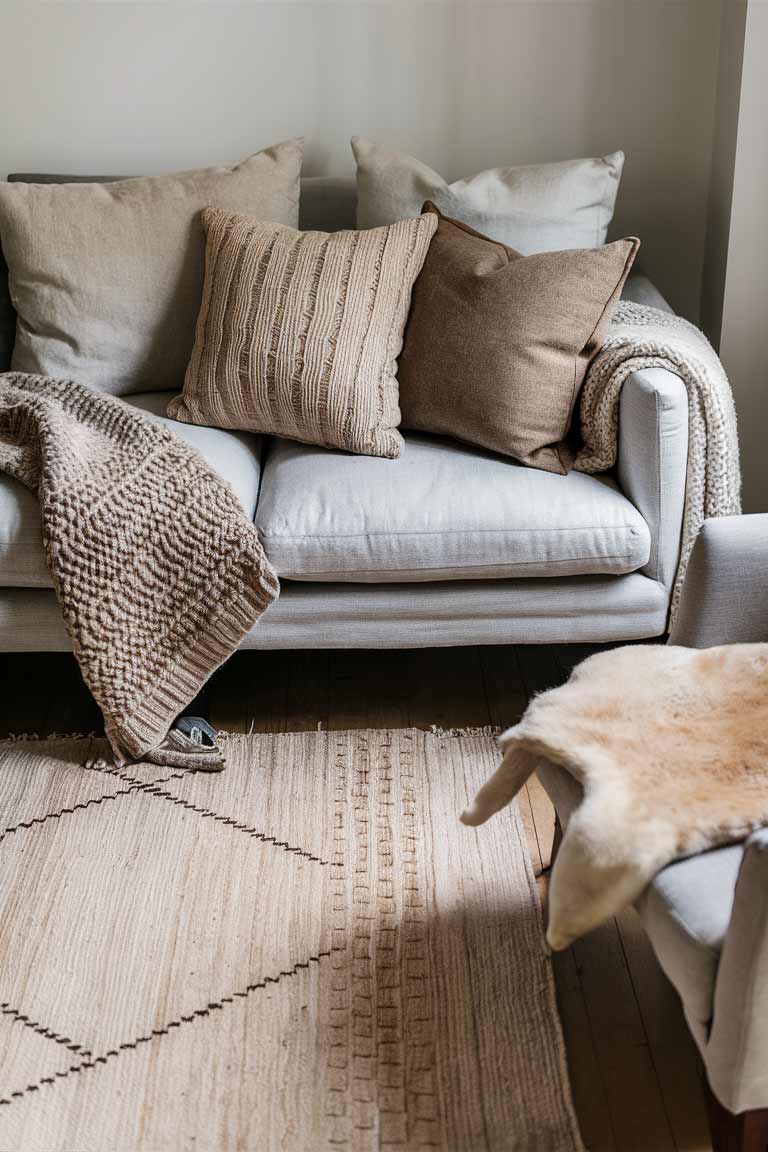
Soft Furnishings
Soft furnishings are where you can play with texture in a Scandinavian minimalist living room.
- Wool or cotton throw blankets
- Linen or canvas pillow covers
- Sheepskin rugs or seat covers
These elements not only add visual interest but also contribute to the cozy feeling that’s so important in Scandinavian design.
Mix and match textures to create a rich, layered look without compromising the overall minimalist aesthetic.
Floor Coverings
Rugs are an excellent way to add warmth and define spaces within a room.
- Large, neutral area rugs
- Geometric patterns for interest
- Natural fibers like jute or sisal
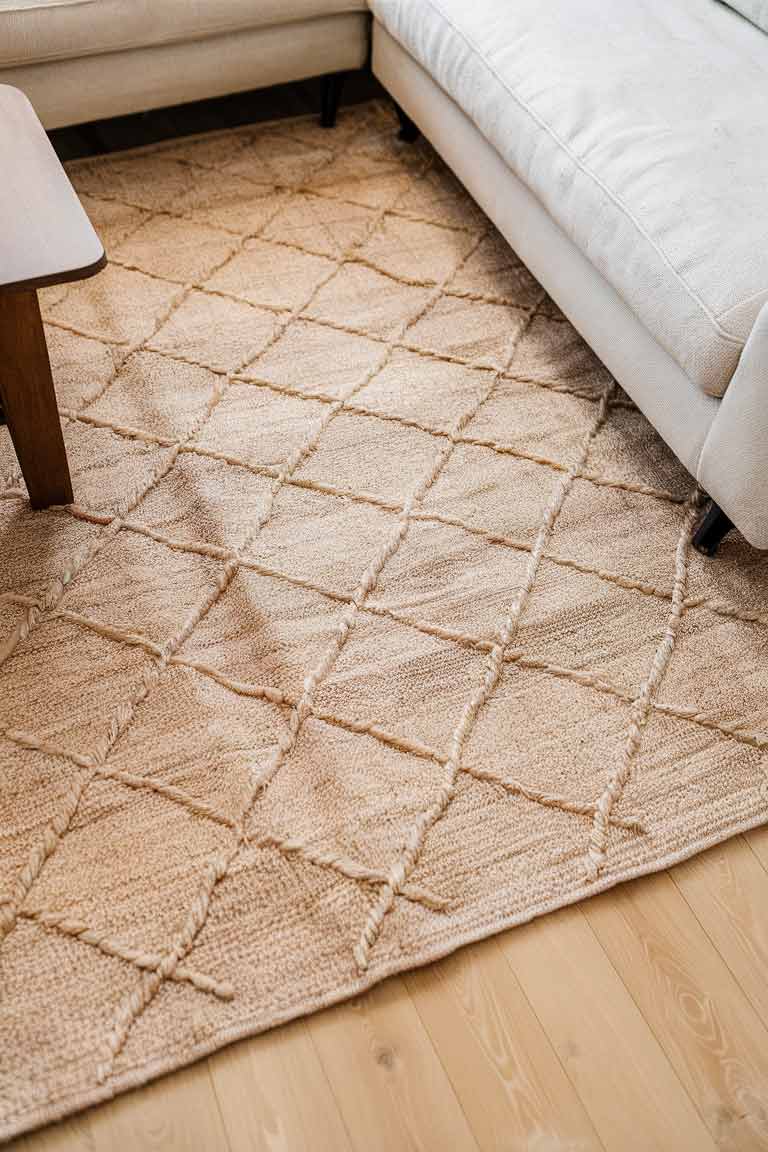
In keeping with the minimalist theme, opt for large rugs in neutral colors. If you want to add some interest, look for subtle geometric patterns.
Natural fibers like jute or sisal look great and add an organic element to the space.
Bringing Nature Indoors
Connecting with nature is a fundamental aspect of Scandinavian design.
This connection is created in a minimalist living room through carefully chosen plants and natural materials.
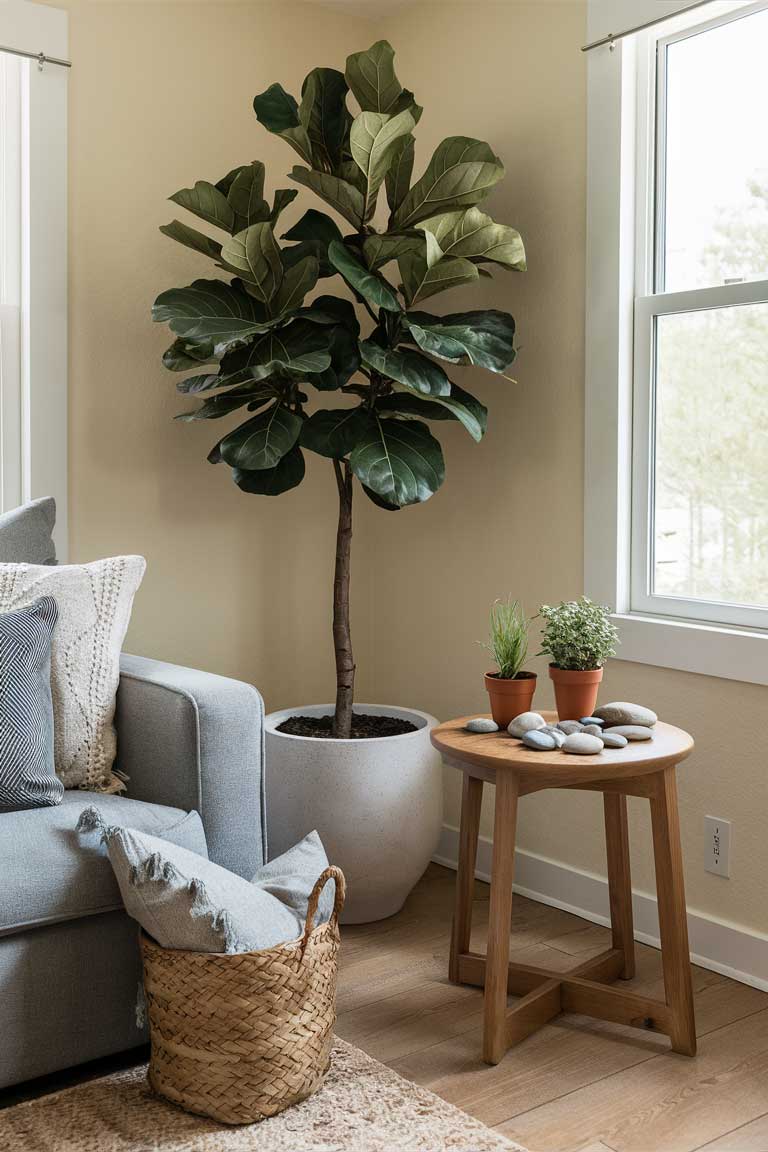
Plants
Plants play a crucial role in Scandinavian interiors, adding life and color to the minimalist palette.
- Large statement plants (e.g., Fiddle Leaf Fig)
- Small potted herbs on windowsills
- Hanging plants for vertical interest
Don’t be afraid to go big with your plants.
A large fiddle leaf fig or monstera can serve as a stunning focal point in a minimalist room.
For a more subtle touch, try arranging small potted herbs on windowsills. Not only do they look great, but they’re practical too.
Hanging plants can add interest to vertical spaces and are perfect if you’re short on floor space.
Natural Materials
Incorporating natural materials is another way to bring the outdoors in.
- Wooden picture frames
- Stone or concrete decorative objects
- Woven baskets for storage and decor
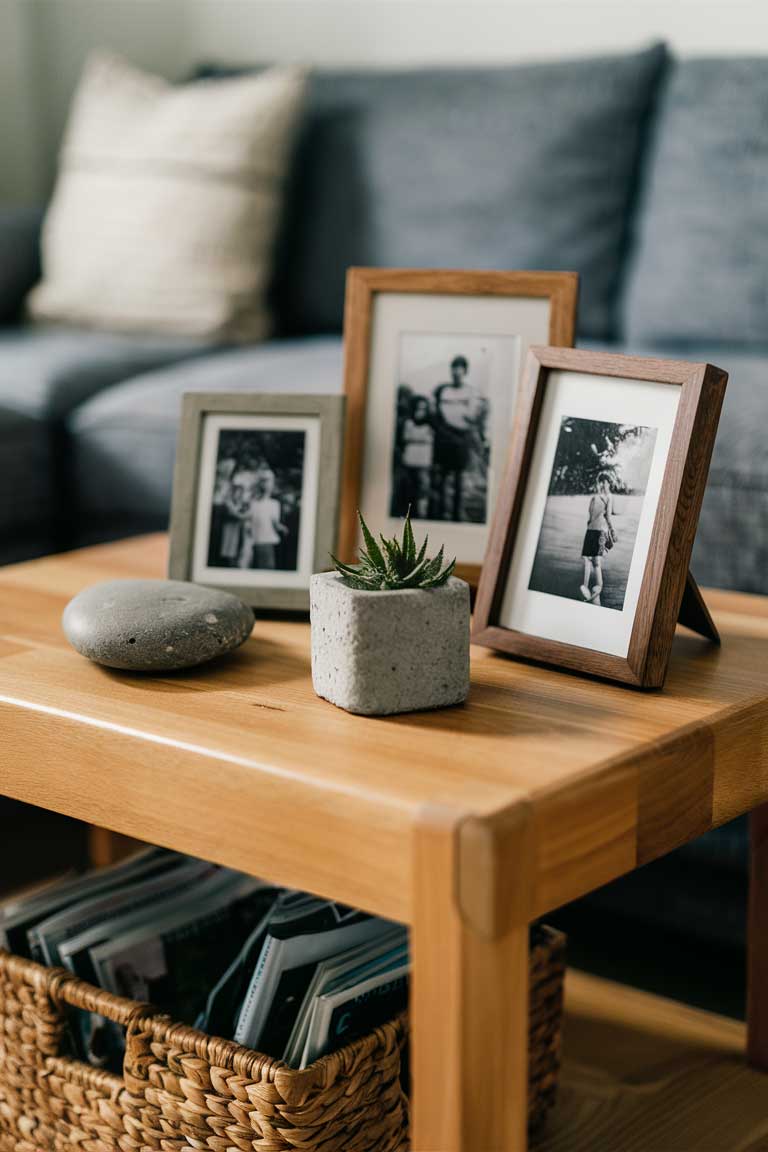
These natural elements add warmth and texture to the space while maintaining the minimalist aesthetic.
Wooden frames can add a touch of warmth to your wall art, while stone or concrete objects provide interesting textures.
Woven baskets are beautiful and practical for storage, helping keep your minimalist space clutter-free.
Minimalist Decor and Accessories
In a Scandinavian minimalist living room, decor and accessories should be chosen carefully.
Each piece should earn its place through its functionality or ability to add beauty to the space.
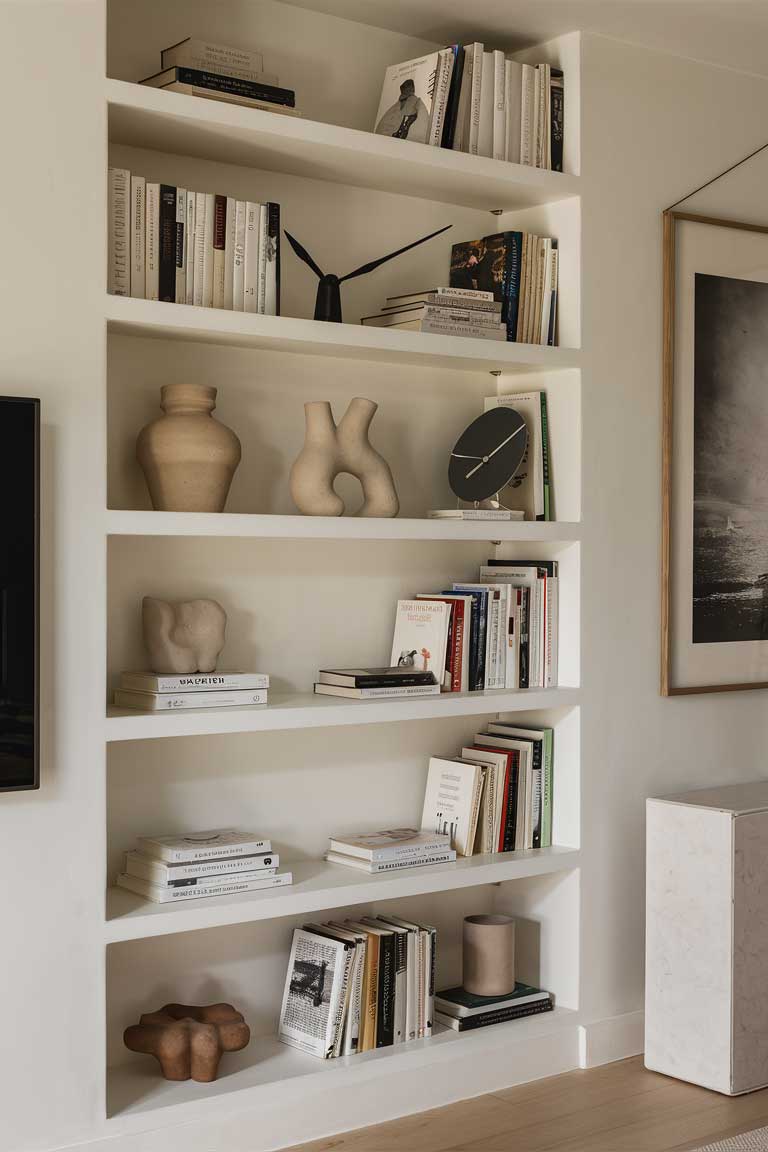
Wall Art
Wall art in a Scandinavian minimalist space tends to be simple yet impactful.
- Large-scale black and white photography
- Abstract paintings with subtle colors
- Gallery walls with consistent frame styles
Black and white photography is a popular choice, as it adds interest without introducing competing colors.
If you prefer paintings, look for abstract pieces with subtle colors that complement your overall palette.
For a more eclectic look, try a gallery wall – just be sure to use consistent frame styles to maintain a cohesive look.
Decorative Objects
When it comes to decorative objects, less is definitely more in Scandinavian minimalism.
- Ceramic vases in organic shapes
- Scandinavian-designed clocks
- Minimalist sculptures or figurines
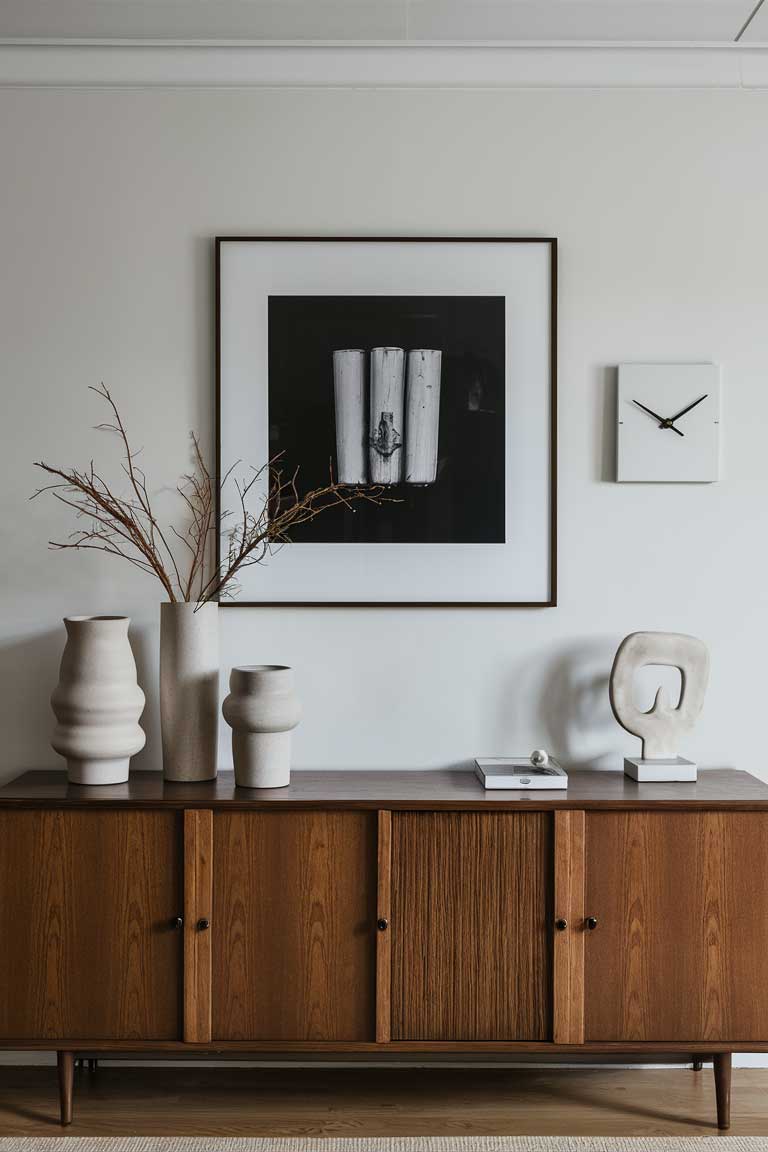
Choose pieces that speak to you and reflect your personal style, but be selective.
A few well-chosen items will have more impact than a cluttered collection.
Look for pieces with clean lines and interesting shapes that complement your minimalist aesthetic.
Creating Functional Zones
Even in a minimalist space, it’s important to create distinct areas for different activities.
This not only improves functionality but also adds visual interest to your living room.
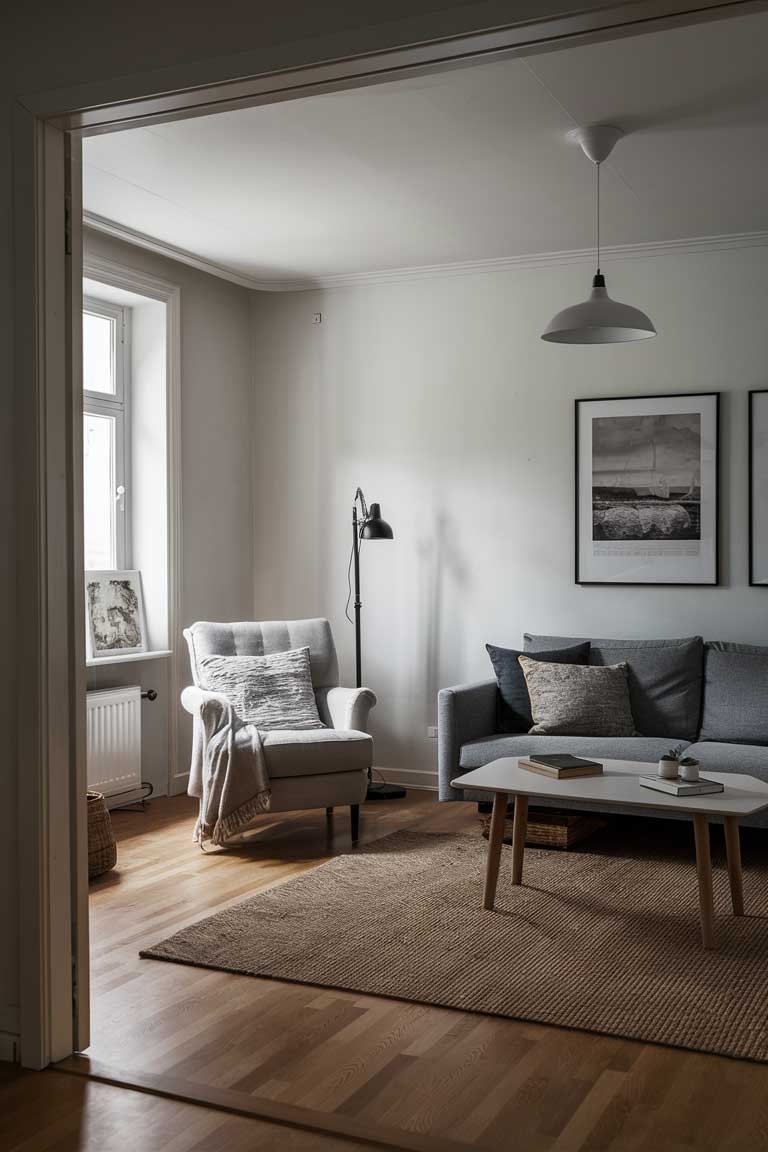
Reading Nooks
A cozy reading nook is a wonderful addition to any living room.
- Comfortable armchair paired with a floor lamp
- Small side table for books and beverages
Create an inviting spot for reading by pairing a comfortable armchair with good lighting.
A floor lamp with an adjustable arm is perfect for this.
Add a small side table to hold your current read and a cup of tea.
Work Spaces
With more people working from home, a dedicated work area in the living room has become increasingly important.
- Wall-mounted desk or floating console
- Ergonomic chair with clean lines
A wall-mounted desk or floating console can provide a work surface without taking up too much space.
Pair it with an ergonomic chair that fits with your minimalist aesthetic.
This area can blend seamlessly with the rest of your decor when not in use.
Conversation Areas
The heart of any living room is the conversation area.
- Furniture arranged to encourage interaction
- A coffee table or ottoman as a central focal point
Arrange your seating to face inward, creating a natural space for conversation.
A coffee table or ottoman can serve as a central focal point, anchoring the space.
Remember, in Scandinavian design, functionality is key—make sure your arrangement is not only beautiful but also practical for everyday living.
Conclusion: Embracing Scandinavian Minimalism
Scandinavian minimalism is more than just a design style – it’s a philosophy that encourages us to live with intention, surround ourselves with beauty, and create spaces that truly enhance our daily lives.
As we’ve explored, creating a Scandinavian minimalist living room involves careful consideration of color, furniture, lighting, textures, and decor.
It’s about balancing functionality, aesthetics, simplicity, and warmth.
Remember, the key elements we discussed at the beginning – light, nature, functionality, and simplicity – should guide your decisions as you design your space.
Maximize natural light wherever possible, bring in elements of nature through plants and natural materials, ensure every piece of furniture serves a purpose, and keep your overall design simple and uncluttered.
Perhaps most importantly, make the space your own.
While there are general principles to Scandinavian minimalism, your living room should ultimately reflect your personal taste and lifestyle.
Choose pieces that speak to you and make you feel calm and content when they surround you.
Creating a Scandinavian minimalist living room isn’t about achieving perfection – it’s about creating a space that feels right for you.
It’s about stripping away the unnecessary so you can focus on what truly matters. It’s about crafting a haven of tranquility in our often hectic world.
So take these ideas, adapt them to your needs, and create a living room that showcases Scandinavian minimalist design and is a true reflection of you.
After all, that’s what makes a house a home – even in the world of minimalism.

